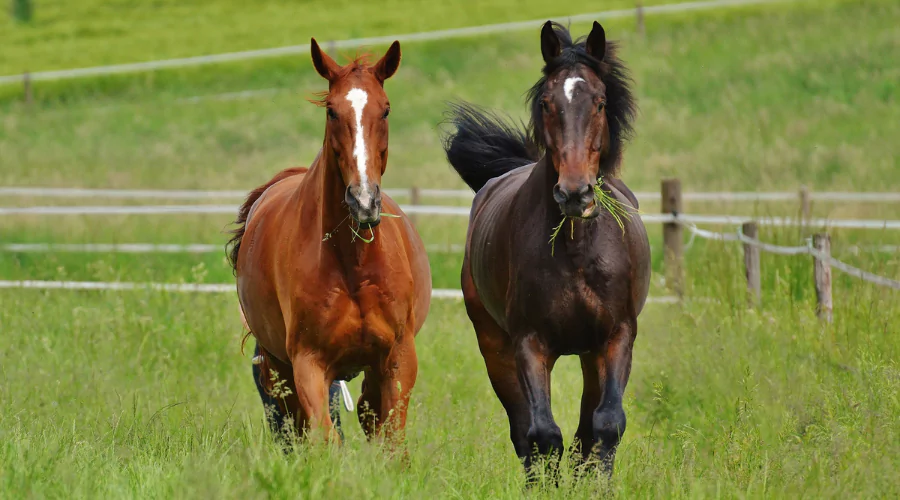A Journey Through Indian Horse Breeds
The connection between horses and India goes back thousands of years and is deeply ingrained in Indian mythology, history, and culture. Geographical variations, climatic shifts, and historical invasions have all had an impact on horse breeding in India, resulting in a wide variety of breeds.
An intriguing emblem of India’s legacy, Indian horse breeds have a rich history that this page explores in depth, including their beginnings, evolution, and distinctive traits. Marwaris, which have their roots in Rajasthan’s Marwar area, are among the most famous horse breeds in India.
Known for their distinctive inward-turned ear tips, Marwari horses are revered for their devotion, courage, and ability to withstand the severe desert environment. Throughout history, they were indispensable in several conflicts, serving as the chosen mounts of the Rajput warriors.
These magnificent animals still captivate equestrians all over the globe and serve as symbols of cultural pride in modern times. They also take part in festivals, festivities, and competitions.
The Origins and History of Indian Horse Breeds
India has a deep and ancient history with horses and horse breeding. According to genetic research and historical accounts, the Harappan civilisation in India was the first to domesticate and produce horses, perhaps about 2000 BCE.
Unique horse breeds have developed throughout the years thanks to careful breeding and the entrance of Arabian, Turkoman, and Persian bloodlines, as well as other influences from the many Indian dynasties and civilizations that have thrived in the country.
The intermingling of native horse breeds with Arabian, Turkoman, and Persian horses not only enlarged the genetic pool but also contributed a diversity of physiognomic features and temperaments, resulting in very adaptable and hardy breeds. The Mughal Empire, with its broad reach and riches, played a crucial part in this process.
The Mughals were famed for their appreciation of horses, bringing thousands from Persia and Central Asia to enhance the cavalry regiments of their strong army. This time constituted a golden era in Indian equestrian history, when breeding programs blossomed under royal sponsorship, focused on developing speed, endurance, and beauty in the indigenous horse population.
Thus, the historical equestrian environment of India is a monument to a rich heritage of horse breeding impacted by both indigenous methods and foreign inputs, forming a complex tapestry of genetic lineage and cultural importance that continues to flourish in the present day.
The Importance of Horse Breeding in India
In India, horse breeding has not only been a subject of pride and prestige but also a tactical advantage in combat and a crucial component of agriculture and transportation. The significance of horse breeds in India is apparent throughout the nation’s folklore, religious literature, and rites, indicating the particular relationship between horses and people in Indian culture.
This deep-rooted significance of horse breeding transcends the historical and reaches the domain of the cultural and spiritual, with horses being adored in many religious rites and festivals across India. For example, the Marwari horse is widely included at traditional Indian weddings, signifying not just rank and money but also delivering blessings of good fortune and success to the newlyweds.
Additionally, in places like Rajasthan and Gujarat, horses are crucial to vivid celebrations like as the Pushkar Fair, where they are decked in lavish clothing and presented in contests that emphasize their beauty, speed, and agility.
Beyond their presence in culture and religion, Indian horse breeds have notably contributed to the rural economy, both as workhorses in agricultural contexts and as a method of transportation. The continuous preservation and development of these breeds not only commemorate India’s equestrian history but also play a key role in supporting the lives of rural populations.
A Tour through Indian Horse Breeds
India is home to several indigenous breeds of horses, each with its unique characteristics, adaptability, and history. Here are some notable Indian horse breeds:
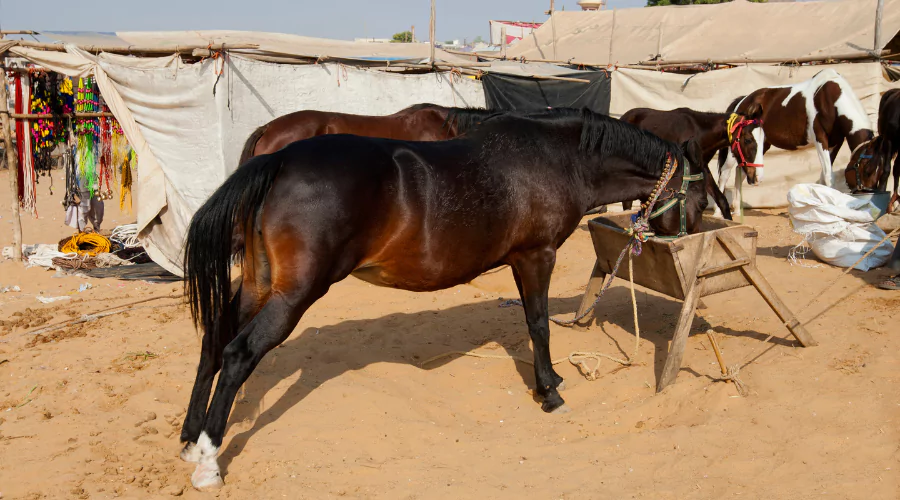
Marwari Horse Breed
Hailing from the Marwar district of Rajasthan, the Marwari is instantly identified by its inward-turning ear tips. Renowned for its devotion and ferocity, the Marwari was a chosen ride for the Rajput warriors. Today, it is appreciated for its elegance and is frequently seen attending traditional and ceremonial occasions.
The beauty of the Marwari horse goes beyond its particular ear shape; it also possesses an astounding spectrum of coat colors, including bay, grey, chestnut, and more infrequently, piebald and skewbald. The Marwari’s stride, famed for its smoothness, gives a pleasant ride, making it highly regarded for long distances and ceremonious situations.
These horses are not simply appreciated for their physical qualities and historical value; they are also famous for their incredible endurance and agility, abilities that were developed over centuries of survival in the difficult desert climate of Rajasthan.
In recent times, the Marwari has become a symbol of the rich cultural legacy of India, finding its place in equestrian sports, dressage, and endurance riding, exhibiting their adaptability and energy. Efforts towards conservation and promotion of the breed have been strengthened to guarantee that this gorgeous equine gem continues to flourish for decades to come.
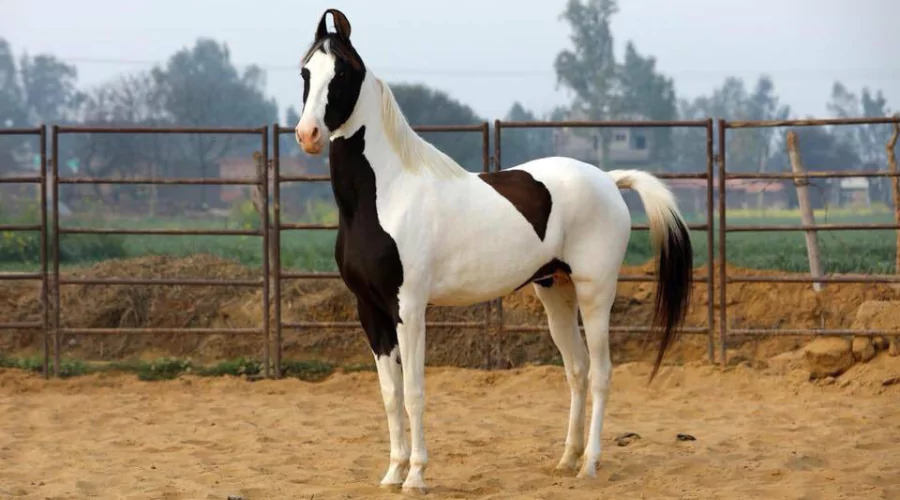
Kathiawari Breed of Horse
Similar to the Marwari but coming from the Kathiawar peninsula of Gujarat, the Kathiawari horse is recognized for its hardiness and agility. This breed also exhibits the characteristic bent ears and is highly appreciated for its ability to live in tough situations.
The Kathiawari breed is not only famous for its flexibility and tenacity but also for its outstanding loyalty and intellect, attributes that have been respected by its breeders for ages. Often seen in a vivid array of coat colors, including chestnut, gray, and bay, the Kathiawari boasts a dynamic but controlled disposition, making it well-suited for a range of equestrian demands, from riding to light draft work.
Traditionally utilized by local law enforcement and in agricultural sectors, these horses have a compact frame, with a muscular body and powerful legs that contribute in their quickness and stamina. In recent years, there has been a rising admiration for the Kathiawari horse in competitive equestrian sports and endurance riding, showing the breed’s flexibility and lasting personality.
Conservation initiatives are ongoing to conserve the unique tradition and features of the Kathiawari, ensuring that this indigenous breed remains a beloved part of India’s equestrian legacy.
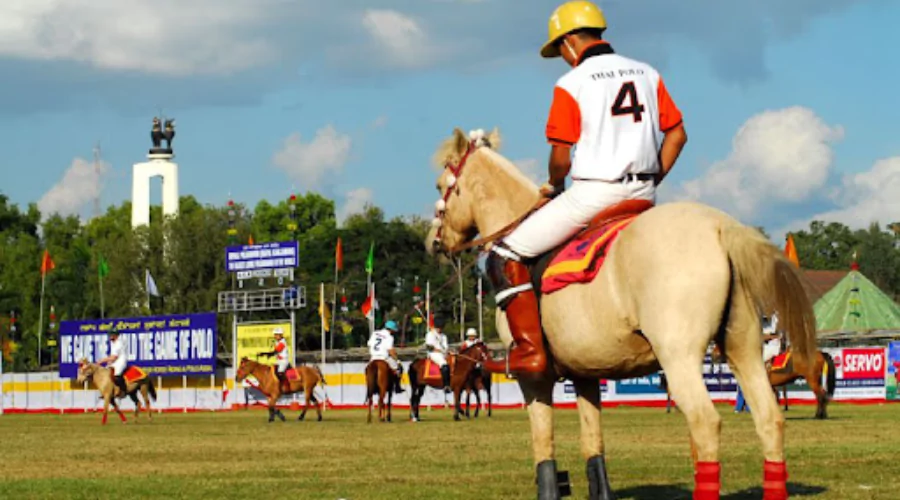
Manipuri Pony
The Manipuri Pony, important to the state of Manipur, is an old breed noted for its involvement in the traditional game of Polo, which is said to have originated in this area. Despite its tiny dimensions, the Manipuri Pony is lively and agile.
Its resilience and agility make it a strong rival in not just polo but also in other equestrian sports. The Manipuri Pony is noted by its robust constitution, capable of tolerating hard terrains and climates with ease. This breed has a small frame, powerful legs, and an attentive disposition, expressing the spirit of the indigenous civilizations it symbolizes.
Beyond the athletic arena, the Manipuri Pony plays an important part in the everyday life of the local populations, contributing to transportation and agriculture. Despite its important cultural and historical value, this breed faces risks from declining grazing grounds and urbanization. Efforts to conserve and safeguard the Manipuri Pony are vital for preserving its population and the cultural value it contains.
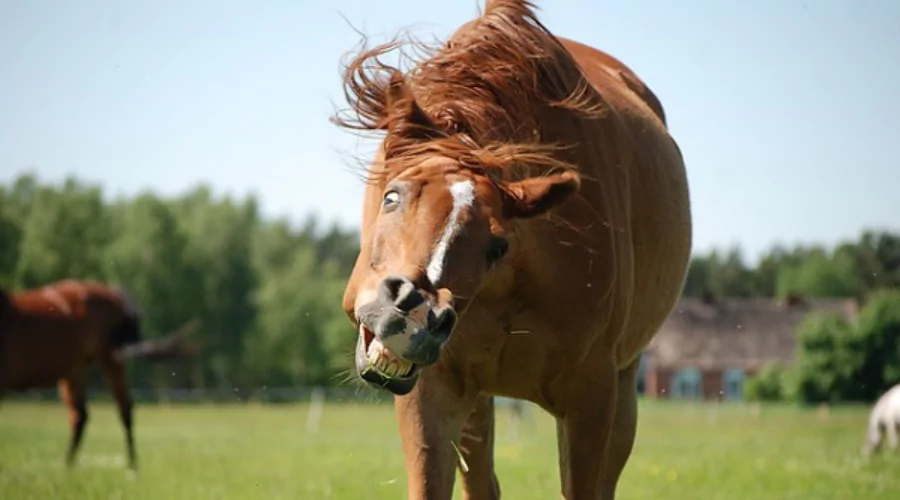
Bhutia Horse
Originating from the Himalayan areas, mainly Sikkim, Bhutia horses are tiny yet strong, adapted to handle the hilly terrains easily. These horses are a key form of transportation in locations where motor cars may not be accessible.
The Bhutia Horse, with its thick coat and tough disposition, is admirably suited to the cold, harsh weather of the Himalayas. This breed demonstrates extraordinary endurance and sure-footedness, making it a useful companion for lengthy journeys and transportation over difficult terrains.
The Bhutia’s calm and robust disposition is particularly valued by individuals who live in and travel through the hilly regions, giving a trustworthy method of navigation in places prone to adverse weather conditions.
Additionally, the Bhutia Horse plays a vital part in the traditional traditions and celebrations of the Himalayan cultures, signifying power and tenacity. Efforts to maintain this unique breed have been important in ensuring that the Bhutia Horse continues to flourish, retaining its value both as a cultural symbol and a critical resource for the local community.
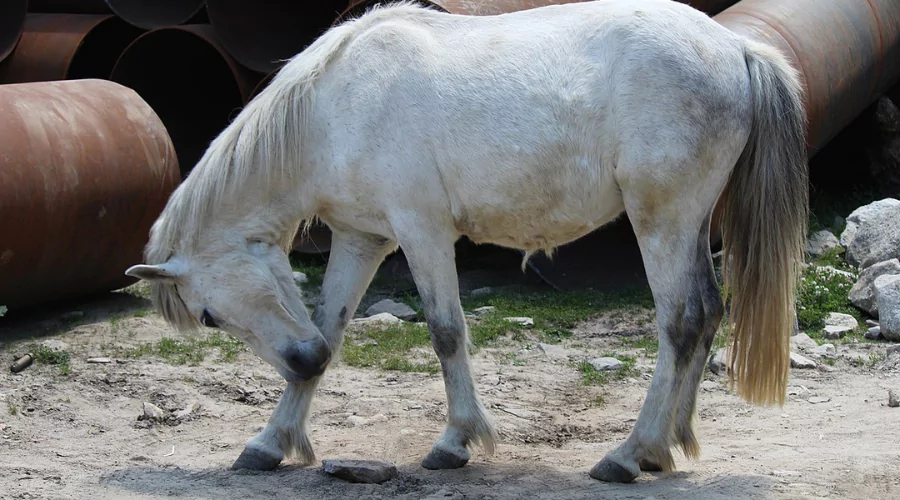
Spiti Horse
The Spiti horse belongs to the Spiti valley in Himachal Pradesh. Similar to the Bhutia, it is recognized for its endurance and ability to labor at high elevations. It has a peaceful disposition, making it suited for the rocky terrains it calls home.
The Spiti Horse is not only notable for its endurance and adaptability but also for its vital part in the cultural and everyday lives of the people in the Spiti Valley. This breed has a smaller height, which is a feature ideally suited for the steep and narrow routes of the Himalayan terrains.
Despite its small, it has a sturdy constitution, which enables it to undertake difficult duties such as transporting things and people over great distances with astonishing ease. The coat of the Spiti Horse is often gray or dun, which offers a natural camouflage against the rocky terrain of its surroundings. Its thick coat, together with a stocky body, helps it to endure the harsh cold of the high-altitude Himalayan winters.
With a calm and stable demeanor, the Spiti Horse is a good mount for novices and expert riders alike, giving a safe and pleasant ride. Conservation and breeding initiatives for the Spiti Horse are critical, as they help to the survival of this unique breed, ensuring it remains a key element of the Himalayan habitat and culture.

Mewari Horse
Less well-known but as essential, the Mewari horse from the Udaipur district of Rajasthan is noted for its endurance and devotion. The breed is a vital element of local culture and tradition.
The Mewari horse, with its towering size and stunning presence, is typically linked with the heroism and majesty of Rajasthan’s epic wars and royal parades. Known for their courage and constancy, Mewari horses have been crucial to the region’s identity, signifying the rich martial legacy of the Mewar kingdom.
These horses are recognizable by their sleek, lustrous coat, which comes in a range of colors including bay, gray, chestnut, and black. Their heads are well-proportioned with expressive eyes, and they boast long, flowing manes and tails, contributing to their royal aspect.
The breed is famous not only for its physical beauty but also for its intellectual, kind, but energetic disposition, making it an excellent horse for ceremonial reasons and pleasure riding. Efforts to conserve the Mewari breed are crucial for conserving this living history, including the creation of specialized breeding programs and the promotion of its historical and cultural value among equestrian lovers worldwide.
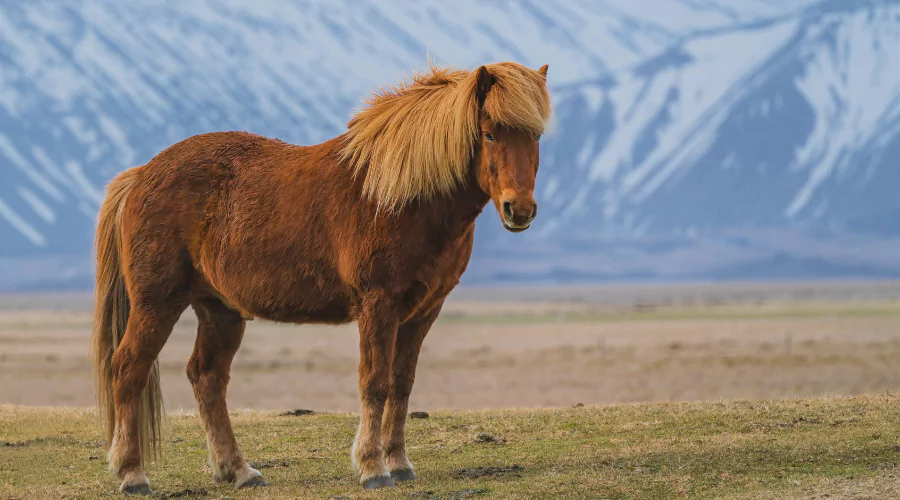
Zaniskari Pony
Originating from the Zanskar area of Jammu and Kashmir, the Zaniskari pony is another high-altitude breed, praised for its ability to cross icy settings. It is noted for its power and sure-footedness in tough terrains.
The Zaniskari pony, with its compact and muscular physique, serves as a monument to the tenacity necessary to live and prosper in the difficult circumstances of the high Himalayas. Notably, this breed has an extraordinarily thick, double-layered coat, which protects it from the harsh cold, making it especially desirable in locations where temperatures routinely plunge below freezing.
The Zaniskari’s hooves are firm and well-shaped, offering good traction on ice surfaces and making these ponies vital for transportation and light cultivation in their native region. In addition to their physical qualities, Zaniskari ponies have a peaceful and stable disposition, enabling them to build tight connections with their handlers.
This feature, along with their exceptional endurance, makes them perfect for lengthy treks and high-altitude trips, supporting both practical requirements and the developing tourist business in the area. Conservation efforts are ongoing to safeguard the Zaniskari pony from the risks presented by habitat degradation and mating with non-native animals, trying to preserve their unique genetics and their cultural legacy for future generations.
Preservation and Future Planning of Indian Horse Breeds
The preservation of Indian horse breeds is vital for conserving the country’s rich cultural legacy and biodiversity. Despite their historical value and distinctive traits, many of these breeds face issues such as loss of habitat, diminished genetic variety, and competition from imported species.
Recognizing this, numerous government and non-governmental groups have started conservation initiatives intended at safeguarding these gorgeous creatures. Efforts to conserve Indian horse breeds include creating specialized breeding facilities, instituting studbook registrations to protect purity of breeds, and promoting local breeds in equestrian sports and cultural events to increase awareness about their relevance.
Additionally, there is an emphasis on scientific study to understand the genetic composition of these breeds better, which assists in focused conservation initiatives. Looking towards the future, it is necessary to reconcile modernity with preservation.
Encouraging good breeding methods, preserving the ecosystems where these horses flourish, and merging traditional knowledge with current conservation strategies are vital to guaranteeing the survival and success of Indian horse breeds. By promoting a better respect and knowledge of these equines, India can guarantee that its gorgeous horse breeds continue to gallop across its cultural and physical landscapes for decades to come.
Conclusion
The breeds of horses in India are as varied and dynamic as the nation itself. From the sandy deserts of Rajasthan to the snowy peaks of the Himalayas, Indian horse breeds have acquired distinct features that make them adapted to their environs. Preserving these breeds and the expertise of horse breeding in India is crucial to preserve the country’s rich cultural legacy and biodiversity.
Frequently Asked Questions (FAQs)
What breed of horse is found in India?
India is home to a number of horse breeds, each with its distinct qualities and adaptations to the local environment. Notable breeds include the Marwari, Kathiawari, Manipuri Pony, Bhutia Horse, Spiti Horse, Mewari Horse, and the Zaniskari Pony.
Which is the best horse in India?
The word “best” might vary based on the criterion utilized, such as endurance, speed, temperament, or adaptability. However, the Marwari horse is generally admired for its elegance, devotion, and long history as a warhorse, making it a great contender for the title of the finest horse breed in India.
What are Indian horses called?
Indian horses are often referred to by their distinct breed designations, such as Marwari, Kathiawari, or Bhutia, among others. Each breed name frequently reflects the place from where the horse comes.
Which is the most expensive horse in India?
The Marwari horse, recognized for its unusual ears and historical importance, generally ranks as one of the most costly horse breeds in India, especially those individuals with a documented lineage and extraordinary features.
What is the price of the best Indian horse?
The price of a high-quality Indian horse, especially breeds like the Marwari or Kathiawari, may vary substantially based on numerous criteria such as genealogy, training, age, and physical qualities. Prices might vary from several thousand to millions of rupees.
You May Also Like:
Spotted Horse Breeds: History, Origin, and Types
8 Beautiful White Horse Breeds
German Horse Breeds: A Quest for Elegance and Power
5 Small Horse Breeds: Little Horses, Big Charm
A Guide to Racing Horse Breeds
